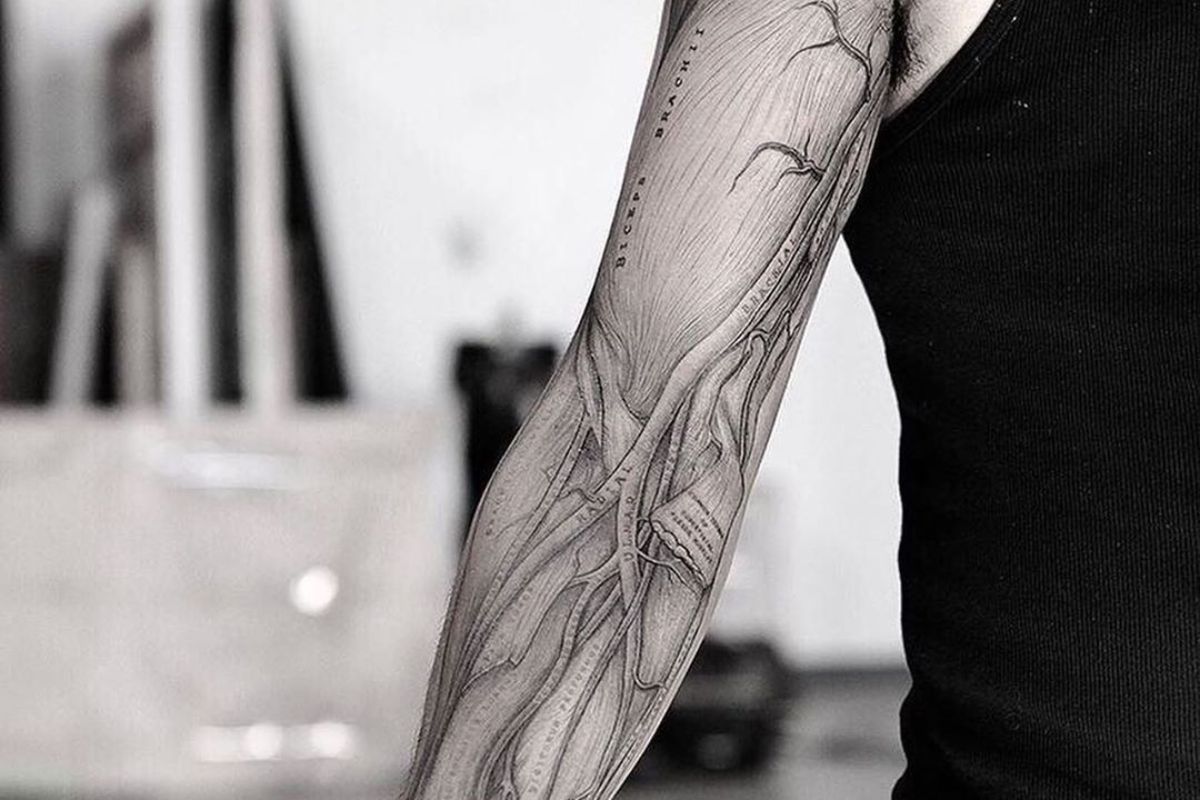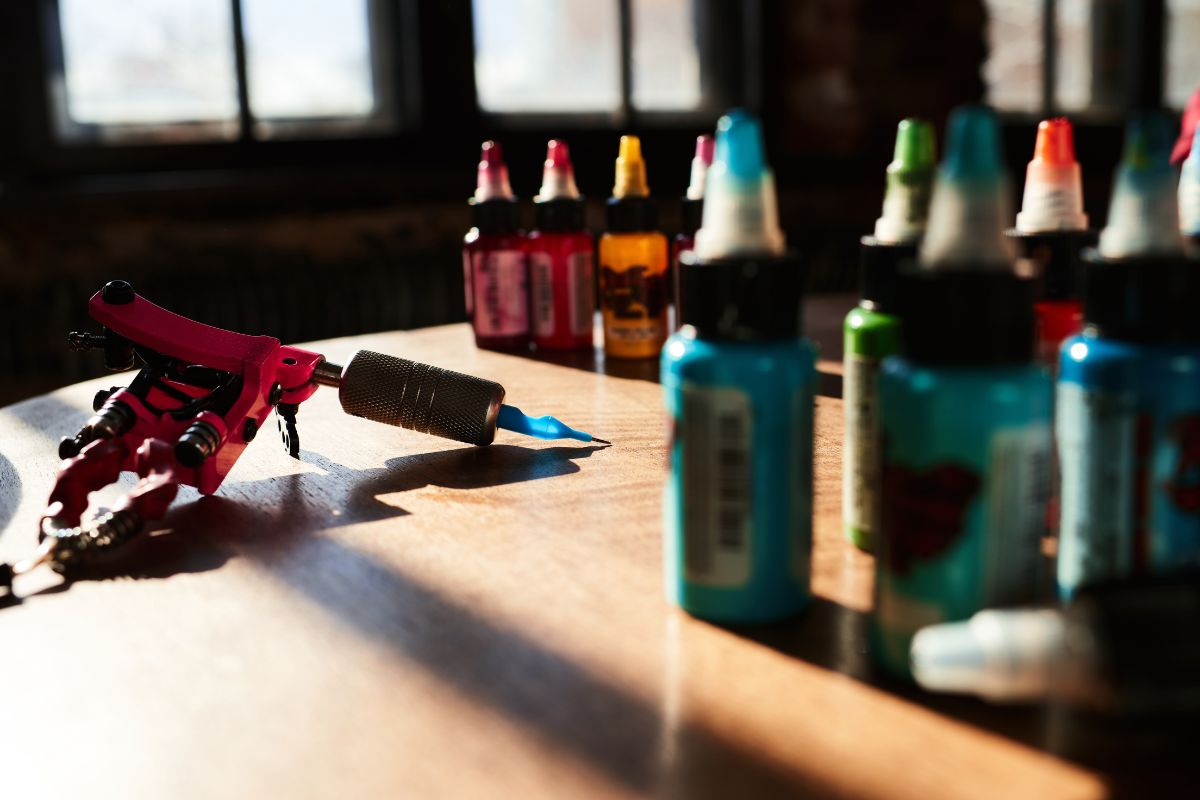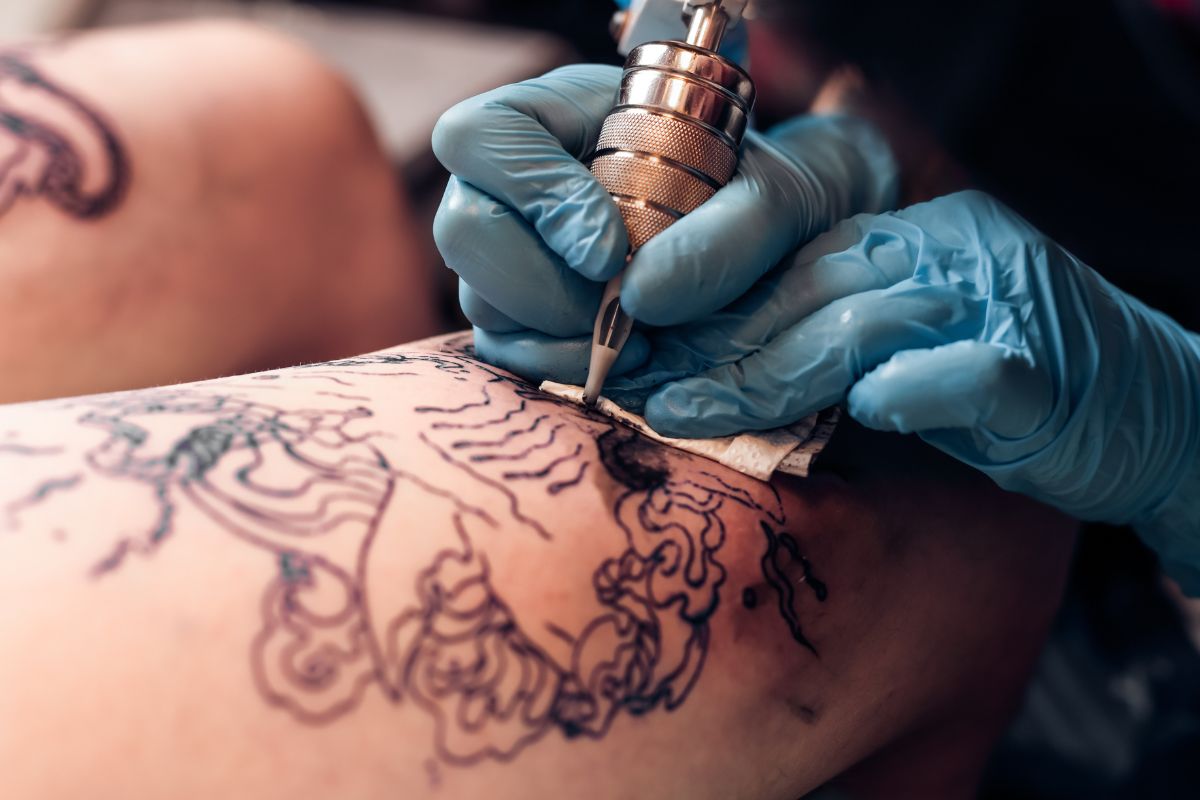Tattoos have transcended their traditional association with rebellion and counterculture to become a mainstream form of self-expression. However, beyond their aesthetic appeal lies a fascinating realm of science and biology. Delving beneath the surface of ink and skin reveals a complex interplay of cellular processes, immune responses, and cultural significance. In this exploration, we uncover the intricate biology behind tattoos, shedding light on how our bodies interact with and preserve these permanent works of art.
Table of Contents
The Anatomy of a Tattoo
Tattoos, often revered as intricate works of art, are equally fascinating in their biological composition. Understanding the anatomy of a tattoo reveals the complex interaction between ink and skin, highlighting the body’s remarkable ability to integrate foreign substances into its structure.
At its essence, a tattoo involves the deposition of ink into the dermal layer of the skin. This process is achieved through the use of a tattoo machine equipped with fine needles that puncture the skin at high speeds, delivering ink droplets into the dermis. The dermis, situated beneath the epidermis, serves as a sturdy canvas for the tattoo, rich in collagen and elastin fibers that provide stability and support.

Once deposited into the dermis, the ink encounters a network of cells and extracellular matrix that facilitate its retention. Specialized immune cells known as macrophages play a pivotal role in this process. Upon detecting the presence of foreign ink particles, macrophages engulf and attempt to break them down. However, tattoo ink particles are too large for complete elimination, resulting in their encapsulation within the dermal tissue.
Over time, the ink becomes enmeshed within the collagen and elastin fibers of the dermis, creating a lasting imprint beneath the skin’s surface. While some ink particles may migrate over the years, the majority remain anchored within the dermal matrix, preserving the integrity of the tattoo design.
The intricate biology of tattoos extends beyond their initial placement, influencing their long-term appearance and resilience. As the skin undergoes natural turnover, with old cells sloughing off and new ones replacing them, the presence of tattoo ink within the dermis prompts the body’s immune system to continuously replenish ink-containing cells. This ongoing process helps tattoos maintain their visibility and vibrancy over time, underscoring the dynamic relationship between ink and tissue.
In essence, the anatomy of a tattoo illustrates the harmonious integration of art and biology, showcasing the body’s capacity to transform a mere pigment into a permanent emblem of identity and expression.
The Immune Response
When a tattoo needle penetrates the skin, it introduces foreign particles of ink into the body, triggering a multifaceted immune response. This response is the body’s natural defense mechanism against potential threats, including invading pathogens and foreign substances like tattoo ink.
Upon detection of these foreign particles, specialized immune cells, such as macrophages, are mobilized to the site of the tattoo. Macrophages, derived from the Greek words “macro” meaning large and “phagein” meaning to eat, are aptly named for their ability to engulf and digest foreign materials. In the case of tattoos, macrophages engulf ink particles, attempting to break them down and eliminate them from the body.
However, tattoo ink particles are too large and complex to be completely digested by macrophages. Instead, they become trapped within the dermis, the layer of skin beneath the epidermis. This inability to fully remove the ink sets off a prolonged immune response characterized by inflammation and the activation of immune cells in the surrounding tissue.
As part of this response, inflammatory mediators, such as cytokines and chemokines, are released, leading to localized swelling, redness, and tenderness around the tattoo site. This inflammatory reaction is a normal part of the healing process and typically subsides within a few days to weeks following tattooing.
Despite the body’s attempts to eliminate the ink, a significant portion remains trapped within the dermis, becoming encapsulated within the tissue. Over time, the immune system adjusts its response, transitioning from an acute inflammatory reaction to a more subdued surveillance of the tattooed area.
While the immune response to tattoo ink helps to contain and stabilize the pigment within the skin, it also contributes to the longevity of tattoos. The ongoing presence of immune cells within the dermis ensures that the ink-containing cells are continuously replenished, helping to maintain the visibility and integrity of the tattoo design over time.
In summary, the immune response to tattoo ink is a dynamic process that plays a critical role in the body’s interaction with foreign substances. While tattoos may initially provoke an inflammatory reaction, they ultimately become integrated into the body’s intricate immune system, leaving a lasting mark on both skin and identity.
The Fate of Tattoo Ink
Contrary to popular belief, tattoo ink doesn’t simply dissipate over time; instead, it undergoes a fascinating journey within the skin. Once injected into the dermal layer during the tattooing process, the ink becomes encapsulated by immune cells known as macrophages. These cells recognize the ink particles as foreign invaders and attempt to break them down. However, due to the size and composition of tattoo ink molecules, complete elimination is impossible.

Instead, the ink undergoes a process of fragmentation. Macrophages break down the ink particles into smaller fragments, which are then dispersed throughout the dermis. Some of these fragmented particles may be transported away from the tattoo site via the lymphatic system, but a significant portion remains trapped within the skin’s layers indefinitely.
As time passes, the dispersed ink fragments become integrated into the extracellular matrix of the dermis, surrounded by collagen and elastin fibers. While the ink may fade slightly over the years due to factors like exposure to sunlight and skin aging, the majority of the tattoo remains visible due to the persistent presence of ink within the dermis.
Recent advancements in imaging techniques, such as multiphoton microscopy, have provided insight into the long-term fate of tattoo ink. Studies have revealed that even decades after tattooing, ink particles persist within the dermis, albeit in a more dispersed and fragmented state. This finding challenges previous assumptions about the transient nature of tattoos and emphasizes the enduring presence of these intricate designs within the skin.
The fate of tattoo ink underscores the dynamic interaction between the body’s immune system and exogenous substances. Despite the body’s efforts to eliminate foreign particles, tattoo ink manages to defy complete tattoo removal, leaving a lasting imprint on the canvas of human skin. As such, tattoos serve not only as expressions of individuality but also as testaments to the body’s resilience and adaptability in the face of external stimuli.
Cultural Significance
Beyond their biological implications, tattoos hold profound cultural significance for individuals and communities around the world. From tribal rituals to modern-day expressions of identity, tattoos have served as markers of belonging, status, and personal narrative. Each design carries its own symbolism and significance, reflecting the wearer’s values, beliefs, and experiences.
In recent years, tattoos have gained wider acceptance in professional and social settings, challenging stereotypes and expanding the boundaries of self-expression. However, debates surrounding cultural appropriation, tattoo regret, and societal perceptions persist, highlighting the complex interplay between personal choice and social norms.
Conclusion
In the tapestry of human history, tattoos have woven a rich and enduring legacy, blending artistry with biology, tradition with innovation. As we unravel the intricate biology behind tattoos, we gain a deeper appreciation for the remarkable resilience of the human body and the profound significance of self-expression. Whether as a symbol of cultural heritage, a commemoration of life’s milestones, or simply an expression of personal style, tattoos continue to leave an indelible mark on the canvas of human experience.
















